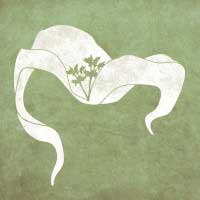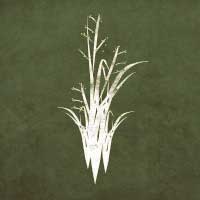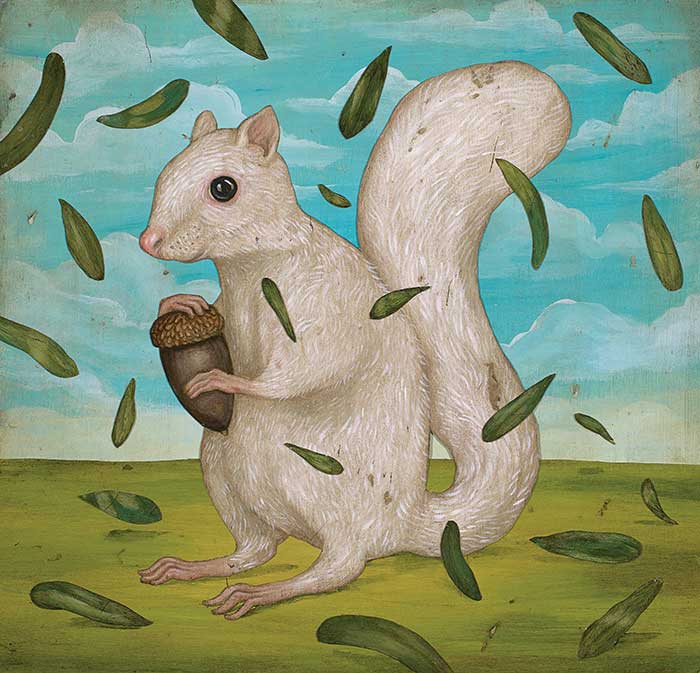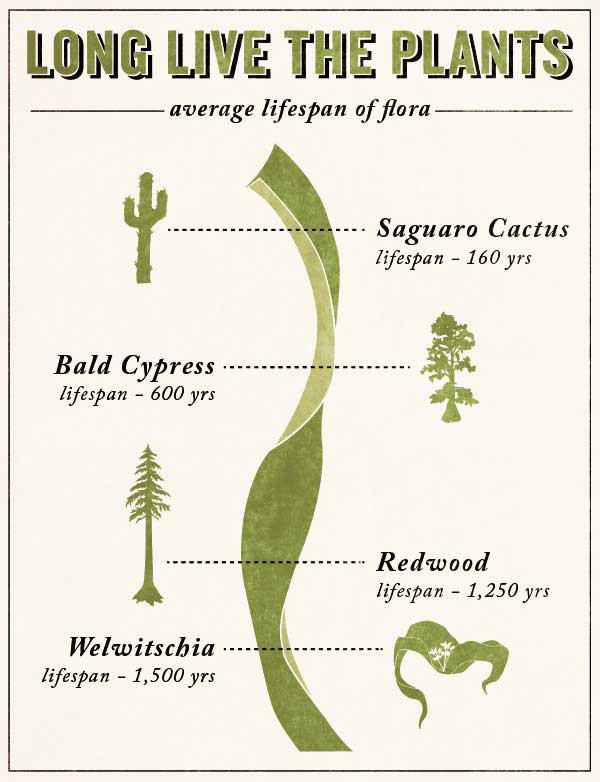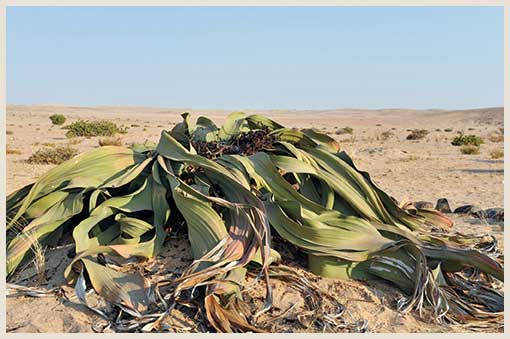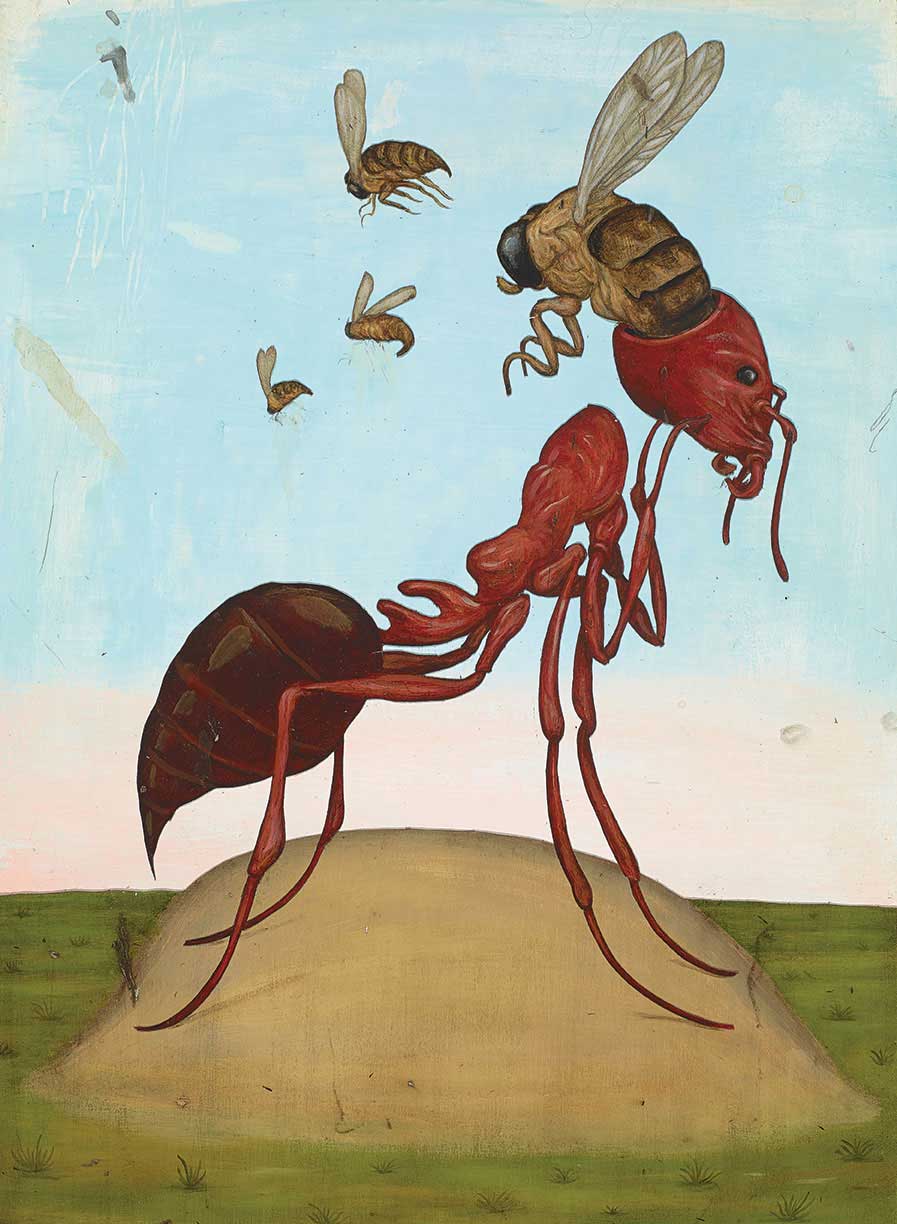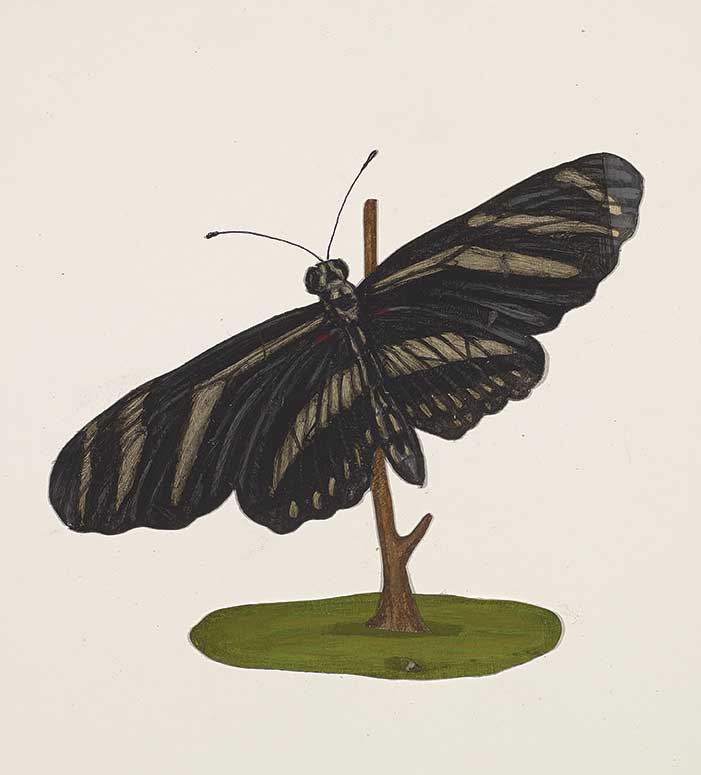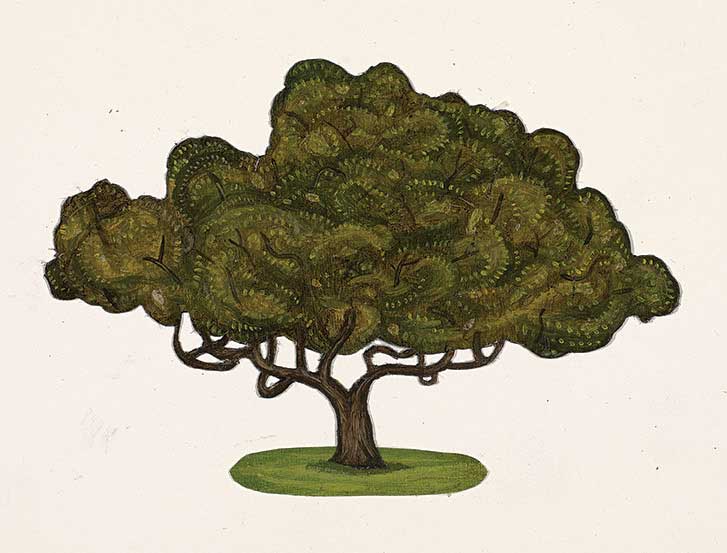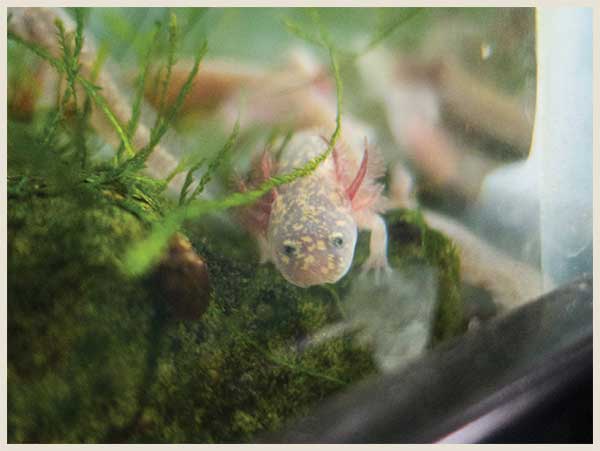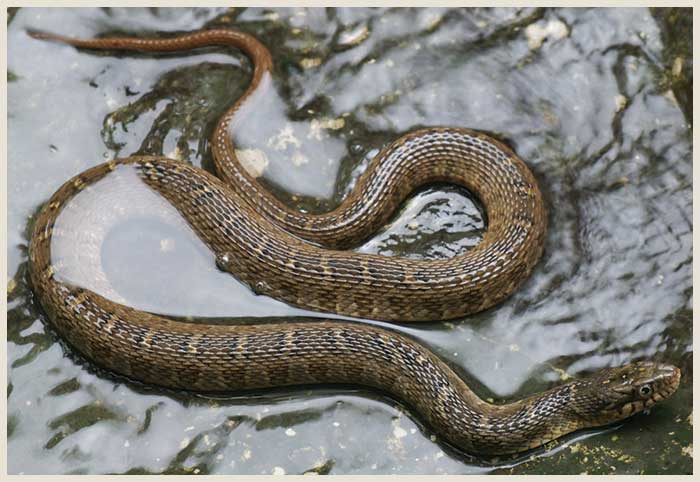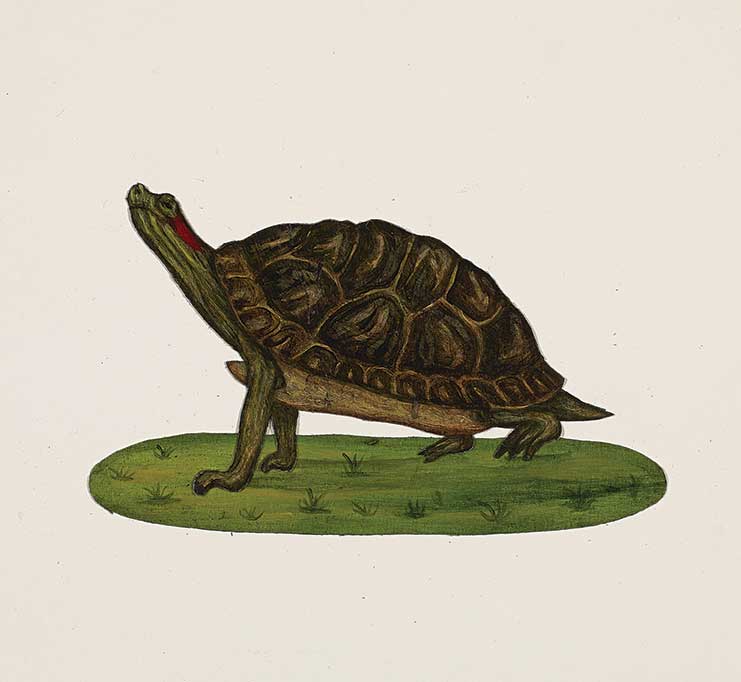Sorry, Longhorns. There is no albino squirrel at The University of Texas.
Today every UT student knows the legend: catching a rare glimpse of an “albino” squirrel on the way to an exam means you’ll get an A. The squirrel—which is usually referred to with a single mythical ‘he’—is said to roam the East Mall, and we’ve spotted him at the Alumni Center more than once.
While there may be several white squirrels on campus, they aren’t really albinos, says UT biologist David Hillis. “It’s a color variant, not a true albino,” Hillis explains. Albinism is a genetic anomaly in which an animal has a total or partial lack of pigment. It’s much more rare—occurring in one in 100,00 squirrels, according to a 1997 Northeastern Naturalist study—than other color variants. Because albinos have poor vision, they’re at a real disadvantage in the wild.
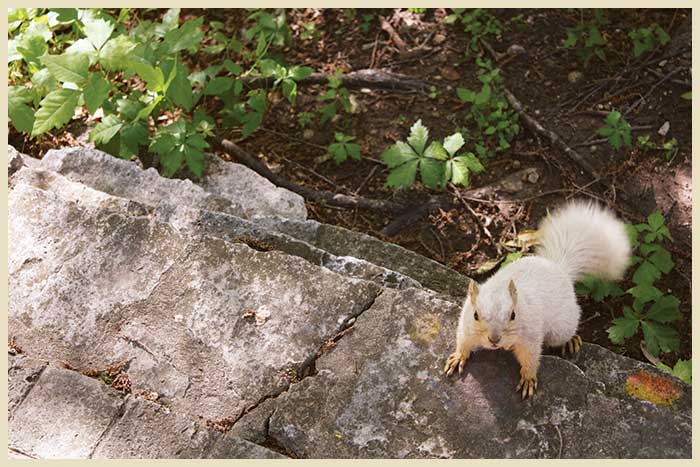
fig. 7
The fox squirrel on campus is an example of a rare color variation.
Photo courtesy Stephanie Sarles
Not sure whether an animal is really albino or not? “Look at the eyes,” Hillis says. Albinos have red, pink, or even blue eyes, while brown or black eyes indicate pigmentation.
Still, a few facts never got in the way of a beloved campus myth. There’s the Albino Squirrel Preservation Society, a tongue-in-cheek student club founded in 2001 (its creed: “To dedicate myself to the protection of all squirrels”), and of course the squirrel is active on Facebook and Twitter. “I’m glad I don’t have opposable thumbs,” @texassquirrel tweeted recently. “I’d have to sign too many autographs.”—Rose Cahalan


